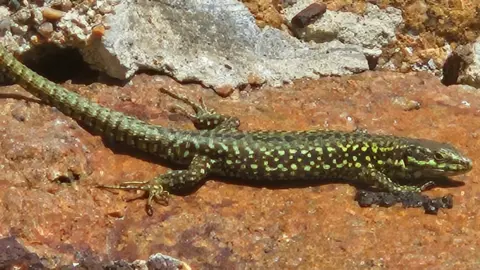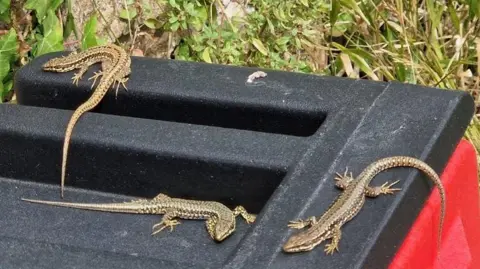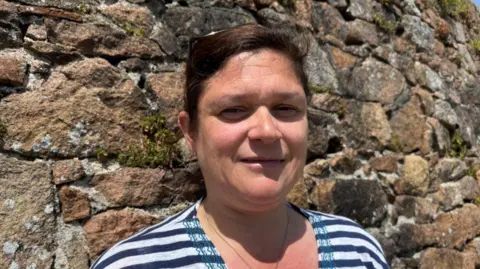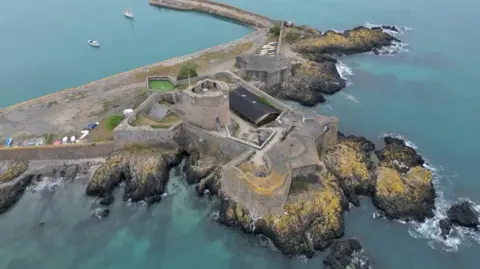Jersey's unique lizards face habitat threat
 BBC
BBCAn ecologist has said it is essential to maintain the habitat of Jersey's wall lizards in the north east of the island to prevent the species from dying out.
The lizards are native to the island and Jersey is the only part of the British Isles where they are found.
Research ecologist Nina Cornish has warned some colonies, such as the one at St Aubin's fort, were at risk of dying out because they were unable to reach other groups to mate.
Dr Tim Wright, head of Jersey's biodiversity team, said dwindling numbers at the fort may be "partly a result of inbreeding" but could also be due to rodents and increased vegetation.
 Agnes Haworth
Agnes HaworthDr Wright said: "We suspect that declining habitat suitability may be the key cause."
Wall lizards are also found at Mont Orgueil, Rozel and Bouley Bay - where Dr Wright said the population remained healthy.
Mrs Cornish - who has studied the origins of the lizards by looking at their DNA – found that the ones from St Aubin's Fort had a very separate genetic make up to others in the island.

Mrs Cornish said it was important to keep a record of lizard numbers and maintain the natural habitats and pathways for them to reach those with a different DNA.
With the help of Oxford University, the ecologist has found that the lizards have been in Jersey since before the island was separated from France by the sea.
She said: "There's lots of anecdotal evidence (from hundreds of years ago) where prisoners in the fortifications - the French prisoners - used to keep lizards as pets...they would have them in their pockets".
There is a wide range of similar lizards in Europe across France, Italy and Northern Spain.

The Jersey Biodiversity Centre regularly monitors the numbers and locations of the reptiles.
It encourages islanders to look out for wall lizards and document their location, as part of it's Reptile Watch programme.
It collects, manages and shares data on Jersey's wild species and is the island's main biological records facility.
The Government of Jersey's biodiversity team said it was grateful to its team of Reptilewatch volunteers who gave up their time throughout the year to help monitor the reptiles.
